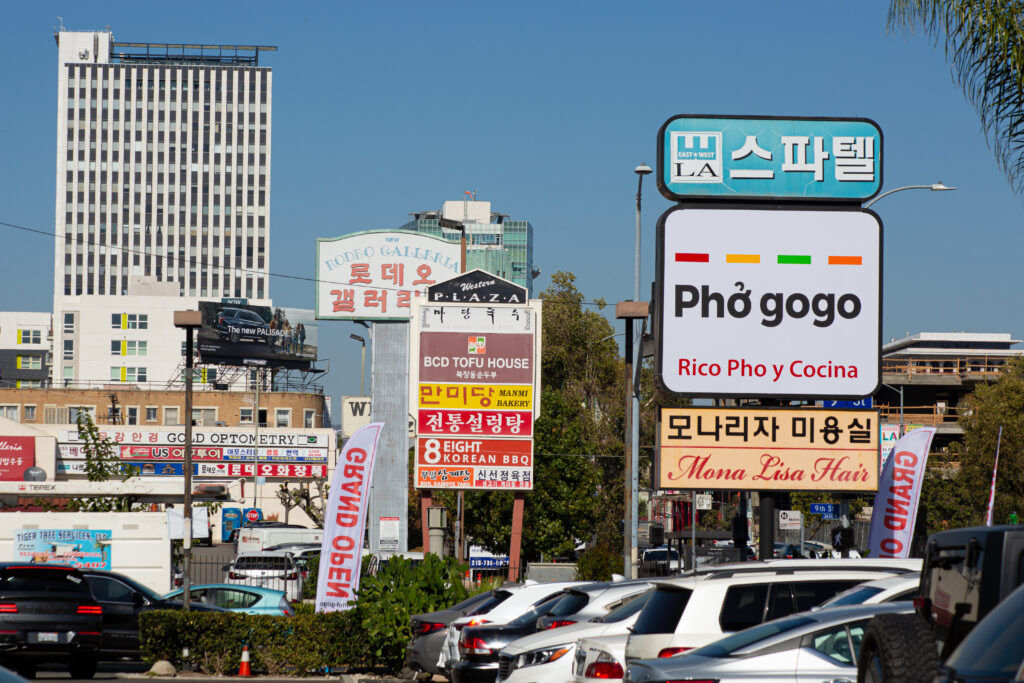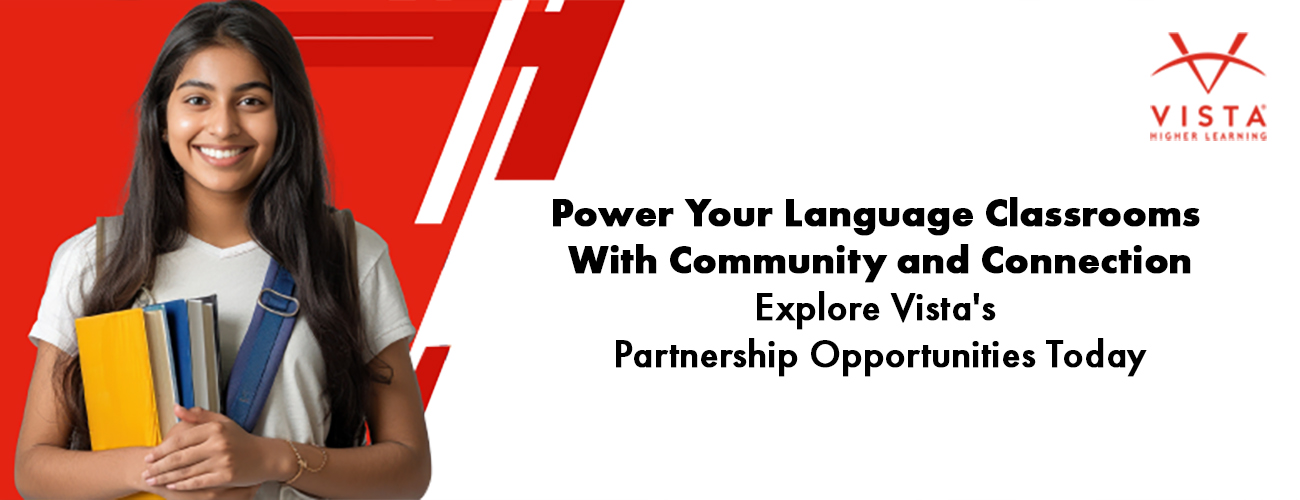María Carreira recognizes the value of apps in making language learning more popular and teachers more effective
There’s an old joke widely used among language teachers: What do you call someone who speaks two languages? Bilingual. Someone who speaks three? Trilingual. And someone who speaks only one? An American.
Funny, right? Not really—at least not to the 68 million of us who speak a language other than English at home. For us, the joke stings because it suggests that speaking another language makes us less American—or worse, not American at all.
Historian Rosina Lozano, author of An American Language: The History of Spanish in the United States, calls this old joke both hackneyed and historically inaccurate. She reminds us: “The long multilingual experience of the United States has remained largely absent from popular understanding of the nation’s history” (Lozano, p. 2).


America’s multilingualism is very much alive today. Our country is the fifth most linguistically diverse in the world—after Papua New Guinea, Indonesia, Nigeria, and India (Ang, 2021). Remarkably, a new report places the number of languages used in the US at more than 500—up from earlier estimates of around 350 (US Census Bureau, 2025).
America’s New Multilingual Moment
To be sure, immigration plays a major role in this linguistic diversity—as do our more than 70 Indigenous languages—but neither is the sole driver of America’s multilingualism. Though it may seem surprising, we are living in an era of unprecedented engagement with language learning across the US. Duolingo, the world’s most downloaded language-learning app, reports that an astonishing 25% of its users—more than 144 million learners—are in the US. A CivicScience study notes that language apps are especially popular among young people: nearly half of all users (48%) are college age, between 18 and 24 (CivicScience, 2023).
This trend stands in sharp contrast to what’s happening on college campuses, where enrollments in language courses have been declining steadily since 2009 (Lusin, 2023). Understanding this paradox may hold the key to designing language programs that are more relevant and responsive to today’s learners, particularly those in higher education.
Rethinking Language Learning
Research on language-learning apps consistently identifies five features that users value most:
- Flexibility: Opportunities for self-paced study anytime and anywhere (Mihaylova et al., 2022).
- Personalization: Lessons that adapt to learners’ goals and needs (Viberg and Kukulska-Hulme, 2021).
- Microlearning: Bite-sized tasks that make learning easy to integrate into busy schedules (Fidan et al., 2021).
- Gamification: Points, streaks, and levels that keep learning fun and motivating (Mihaylova et al., 2022).
- Autonomy: The ability to set goals and direct one’s own learning (Viberg and Kukulska-Hulme, 2021).
A key to designing stronger language programs lies in integrating the valuable features of language-learning apps while preserving the evidence-based pedagogical practices and sense of community that define classroom instruction today. With this in mind, a promising approach is to create hybrid courses that incorporate the use of a language-learning app as part of the formal curriculum, perhaps as a unit of credit or as a recurring guided assignment undertaken outside of class for a portion of the final grade.
To make this model work, however, thoughtful integration between app-based learning and classroom instruction is essential. Independent app work should be followed in the classroom by a guided reflection on what has been learned, additional practice, and an assessment to track progress. This layering effect ensures that independent learning is reinforced, contextualized, and extended through meaningful classroom interaction. It ensures that independent learning is not treated as a mere formality to fulfill the requirements for a unit of credit and that it is not perceived by students as pointless busy work.
This approach can be particularly effective in classes that include both heritage and second-language learners (so-called mixed classes). Such classes pose unique challenges because the two groups often have very different needs and skills. As a result, each group may feel somewhat insecure in relation to the other: heritage learners may be intimidated by second-language learners’ stronger command of grammar and spelling, while second-language learners may feel uncertain about their ability to use the language spontaneously.
Language apps can facilitate differentiated learning by allowing each group to pursue its own goals while engaging with common content. Consider, for example, the teaching of vocabulary, a central piece of all language-learning apps. Heritage learners may already know the meanings of many everyday words and use them comfortably in conversation, but they may be less familiar with their written forms. A reflective in-class activity could invite them to note specific orthographic conventions practiced during an app lesson. Meanwhile, second-language learners can take class time to practice using this vocabulary in spontaneous conversation. To further extend learning, and to help heritage and second-language learners recognize one another as valuable resources rather than as threats, classwork activities can draw on their complementary skills to facilitate reciprocal learning. This combination of targeted practice and mutual exchange represents one of the most effective approaches to teaching mixed classes (Carreira, 2016).
While this example highlights the potential of apps in mixed classrooms, the same principles apply broadly in any instructional context. When thoughtfully paired with in-class activities that promote reflection and teach language-learning strategies, language apps can be harnessed to support differentiated, self-guided, and collaborative learning.
To support personalization, students should have the opportunity to choose some of the units or topics they study. To exercise autonomy, they might analyze what additional content and activities could make their selected unit more effective—both for themselves and for their classmates. To promote a sense of ownership of the material, they could even publish their own reviews of language-learning apps, offering constructive suggestions to developers and sharing their insights with the broader educational community. These kinds of activities help learners develop what is known as disciplinary literacy—the ability to participate not merely as recipients of instruction but as emerging experts and contributors to the field (Shanahan and Shanahan, 2013; Carreira, 2016).
Exploiting the Full Range of Digital Resources
Beyond language-learning apps, a wealth of freely available digital resources can also contribute to this general approach to configuring instruction. For example, students can exercise autonomy by taking an active role in finding and curating such resources. The collective contributions of all learners can become a valuable repository of authentic materials for the benefit of the class as well as future cohorts. These kinds of activities deepen learners’ investment in the material and provide richer exposure to the target language.
Learners interested in language for specific purposes can focus on collecting materials related to a professional field of their choice. This approach personalizes learning and enhances motivation by aligning language study with learners’ professional aspirations, a feature increasingly valued by today’s students.
A crucial element in all of this is the teacher’s role. Instructors must take an active part in helping students locate authentic sources, evaluate their quality, identify key linguistic and content features to be learned from them, and enact learning strategies that promote genuine linguistic and cultural growth. In short, to maximize the value of language apps, teachers must provide the roadmap to learning.
Reaffirming the Classroom and Strengthening Programs of Study
In today’s increasingly remote and digitized world, it is important to remember that opportunities to engage in person are more necessary than ever. The classroom remains the premier space where language comes alive: where learners negotiate meaning, engage in authentic communication, and experience connection and community, all of which are essential to motivation. For heritage learners, the classroom offers a much-needed space to explore identity, belonging, and shared experiences: elements that lie at the core of heritage language learning.
Beyond the classroom, at the program and institutional levels, language-learning apps offer renewed hope for expanding the study of less commonly taught languages, even as institutional resources for language education are becoming increasingly scarce. Duolingo, which provides free access to more than 40 languages, illustrates the vast potential of these platforms not only to broaden the range of languages offered but also to sustain additional levels of instruction through new opportunities for independent learning beyond the classroom. In this way, today’s language-learning apps are a powerful tool for supporting diversity, equity, and access in language learning.
Ultimately, the goal is not to replace traditional instruction but to enrich it by incorporating digital tools and authentic online resources that make language learning more engaging for today’s students. In doing so, we can make language study more attractive, effective, and equitable, while strengthening our nation’s extraordinary multilingualism and multiculturalism.
References
- Ang, C. (2021). “The Countries with the Most Linguistic Diversity.” Visual Capitalist. www.visualcapitalist.com/the-countries-with-the-most-linguistic-diversity
- Carreira, M. (2016). “Approaches and Strategies for Teach-ing Heritage Language Learners: Focus on mixed classes.” In Pascual y Cabo, D., and Benjamins, J. (Eds.), Advances in Spanish as a Heritage Language, pp. 159–176.
- CivicScience (2023). “How Many Americans Use Language-Learning Apps?” https://civicscience.com
- Fidan, M., et al. (2021). “The Effectiveness of Microlearning in Mobile-Assisted Language Learning.” Education and Information Technologies, 26(6), 6651–6673.
- Lozano, R. (2018). An American Language: The History of Spanish in the United States. University of California Press.
- Mihaylova, P., et al. (2022). “Mobile-Assisted Language Learning: Motivation, Engagement, and Gamification.” Journal of Language and Education, 8(2), 45–59.
- Lusin, N., Peterson, T., Sulewski, C., and Zafer, R. (2023). Enrollments in Languages Other Than English in United States Institutions of Higher Education, Fall 2021. MLA.
- Shanahan, T., and Shanahan, C. (2013). “What Is Disciplinary Literacy and Why Does It Matter?” Topics in Language Disorders, 33(1), 7–18.
- US Census Bureau. (2025). “New Data on Detailed Languages Spoken at Home and the Ability to Speak English.” Press Release CB25-TPS.40. www.census.gov/newsroom/press-releases/2025/2017-2021-acs-language-use-tables.html
- Viberg, O., and Kukulska-Hulme, A. (2021). “Personalization and Self-Regulated Learning in Mobile-Assisted Language Learning.” ReCALL, 33(3), 234–252.
María Carreira is executive director of the American Association of Teachers of Spanish and Portuguese (AATSP).



